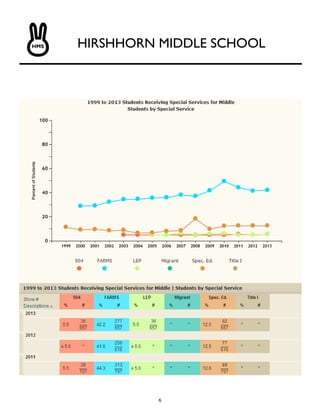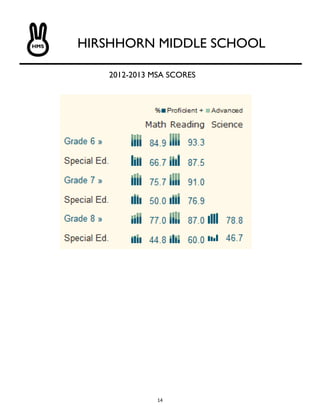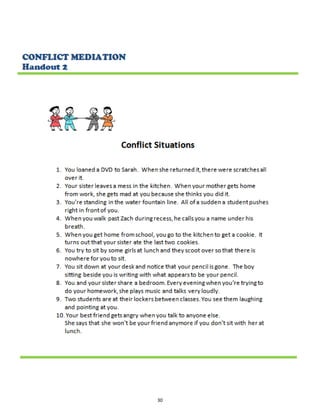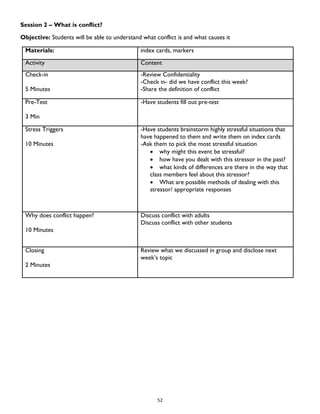This document provides information about Hirshhorn Middle School's counseling department and programs. It includes the school's vision, mission, student population data from 2011-2014, discipline and attendance rates, and MSA scores. Key needs identified include high discipline rates for 6th grade African American males, low attendance among Hispanic females, and low math scores for 8th grade special education students. Goals are set to address each need by 2015. The school counselor's duties and programs are outlined, including use of time, advisory council meetings, and professional development plans.






























































































